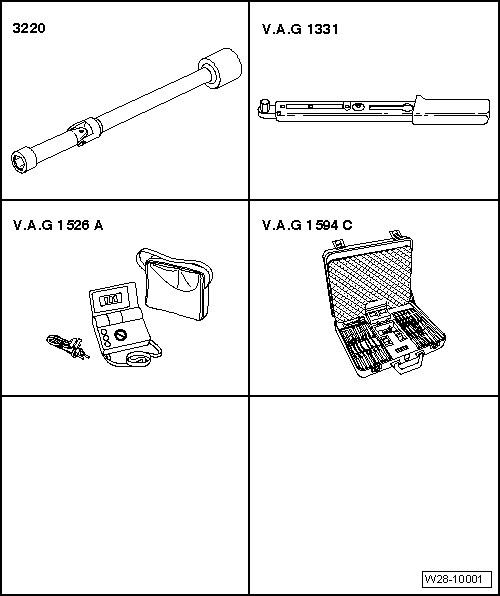| l
| The battery voltage must be at least 11.5 V. |
| l
| All electrical consumers, e.g. lights and rear window heating, must be switched off. |
| l
| Diesel direct injection system control unit -J248- is OK. |

Note | Do not cant ceramic glow plugs when removing and installing. Remove components hindering the installation. |
| –
| Pull connectors off ceramic glow plugs. |
| –
| Remove ceramic glow plugs using U/J extension and socket, 10 mm -3220-. |
| Installation is carried out in the reverse order. When installing, note the following: |
| –
| Before installing, all deposits must be removed completely from cylinder head bore and thread. |

Note | Never oil or grease thread of cylinder head bore or of ceramic glow plugs. |
| –
| Screw ceramic glow plugs into cylinder head by hand using U/J extension and socket, 10 mm -3220-. |
| –
| Then tighten the ceramic glow plugs. Torque setting: 15 Nm. |

WARNING | t
| After installing and before the engine is started, always perform a resistance test on all ceramic glow plugs when engine is cold. |
| t
| If a defective ceramic glow plug is broken remove all fragments from the engine, otherwise these can cause damage to the engine. |
|
| t
| Specification: Max. 1 Ω |
| –
| If the specification is exceeded, renew the defective ceramic glow plug. |
|
|
|

 Note
Note Note
Note
 WARNING
WARNING